Past and future changes in Hawaii’s economy caused us to reflect on the Hawaii sugar cane history. We still remember driving to Kauai’s westside and seeing the vast fields of sugar, which have since been left empty. And for those of you who grew up on the mainland in the 60s and 70s, you will undoubtedly enjoy the video below of those old C&H commercials about “pure cane sugar from Hawaii.”
Alexander & Baldwin (think C&H) was the last major Hawaii sugar cane plantation owners to exit the business. This came following other similar circumstances over a period of years that ended much of Hawaii’s agriculture, as many of us still remember. That included sugar cane on Kauai and Maui and pineapples on Lanai. Those were, at one time, the largest employers in the state. In the end, the cost of doing business in Hawaii became such that it was no longer possible to compete globally. Hawaii moved to today’s tourism industry plus value-added products.
Read on for the C&H story below and that of the National Historic Landmark at Koloa Sugar Plantation.
Where did sugarcane come from?
Sugarcane may have emanated from New Guinea 10,000 years ago. From there, it spread throughout Southeast Asia, the Middle East, India, and Polynesia. It was ultimately brought to Hawaii, perhaps 1,000 years ago. Hawaiians grew and chewed sugarcane on a small scale but did not refine it to make sugar.
The Hawaii sugar industry dates back to 1835.
Sugarcane started commercially on Maui in 1848 with the Haliimaile Plantation and at Koloa, Kauai, the same year. On Maui, the Spreckelsville Mill (Alexander & Baldwin) was once the world’s largest sugar mill and remained in use for 168 years.
The first commercial sugar plantation was established on the island of Kauai, with other plantations sprang up throughout the islands, reaching a peak number of 80 by 1884. Over time, much consolidation caused closures and created larger, more profitable plantations.
The Koloa Mill on Kauai began production and, in 1936, saw its first commercial shipments to the US mainland. South shore Kauai grew around that plantation, whose building is still there today. An earlier plantation actually began limited production on Lanai starting in 1802.
The Hawaii sugar cane expanded starting in the mid-1800s when tariffs were eliminated on sugar imported to the US mainland. The industry to nearly 250,000 acres by the 1940s with labor brought from China, Japan, Puerto Rico, Portugal, and the Philippines. The industry was under the control of five missionary families. From that industry emerged a common language – Hawaiian Pidgin.
Sugar plantations began running into trouble and were shuttering operations as far back as the 1950s. Far cheap foreign sugar began to dominate the global industry, while Hawaii tourism, based on jet travel, created more land value when used for resorts than for agriculture.
Sugar’s painful history.
An 1848 law displaced Hawaiians from their land to allow the plantation economy and foreign ownership to flourish. The California Gold Rush and the Civil War greatly increased the demand for Hawaiian sugar. Subsequent laws provided for Hawaii to sell sugar to the US without taxes, which also increased production. Plantations wanted to see Hawaii be part of the US to avoid tariffs and provide security through a US military base.
The sugar industry was controlled by five missionary families, including Alexander & Baldwin, Castle & Cooke, C. Brewer & Co., Amfac, and Theo H. Davies. These companies came to control shipping, warehousing, banking, importing, and more in Hawaii. They played an integral and controversial role in the overthrow of the Kingdom and Hawaii becoming a US territory.
With the sugar plantations came the requirements for a large labor force.
Hawaiian natives largely chose to work in the industry. As a result, plantations began importing laborers from abroad starting in 1850, when nearly 50,000 Chinese workers came to work in Hawaii. In the 1870s, Japanese workers began to arrive, with 200,000 coming to Hawaii and returning to Japan. In the early 1900s, Korean workers arrived, followed almost immediately by those from the Philippines.
Hawaii’s Pidgin language arose from the globalized sugarcane workforce, which needed a common language.
Much of Hawaii’s land was taken over by sugar growing. Plantations were strewn throughout Hawaii, where there was good soil, level ground, and access to much-needed water. Mills were destructive to the environment and originally used wood for fuel, destroying Hawaii forests. While some methods improved, air and water pollution remained problematic to the end.
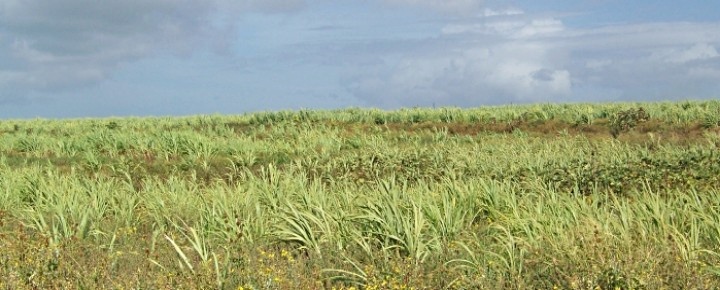

As tourism began to rise, sugarcane receded.
Due to various reasons, including increasing labor costs and unrest, Hawaii’s sugar business began a long but steady descent. By 2016, the last working mill, with its iconic belching smoke that many of us still remember, at Puunene Maui, closed permanently.
C&H Sugar “pure cane sugar from Hawaii.”
See the C&H video at the bottom of the post. Who doesn’t remember the jingles below from the California and Hawaiian Sugar Company (C&H), an American sugar processing and distribution legend? It started as a co-op in 1921 and continued until 1993 when it was sold to Alexander & Baldwin. Not long after, A&B sold a majority to Citicorp which then sold to American Sugar Refining. But in the end, high Hawaii labor prices and low sugar value brought the venture to an end.
Old Koloa Sugar Mill National Landmark | Koloa Plantation Days.
Dating from 1840, the Old Koloa Sugar Mill, and its stone chimney and foundations were designated a National Historic Landmark in 1962. The sleepy Southshore town of Koloa annually celebrates its Koloa Plantation Days. Details of this year’s 36th annual event are upcoming. If you visit their Facebook page, you can still see last year’s event.
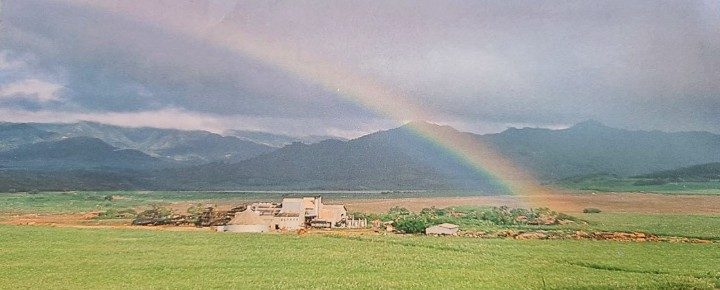
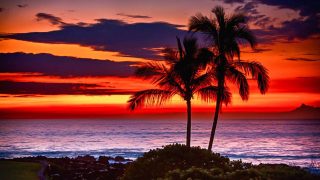
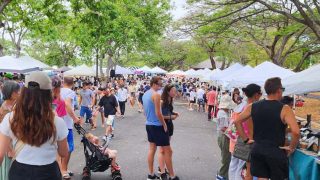


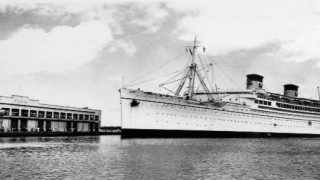

Enjoyed reading this interesting article. My daughter was born in 1963. She walked at about 8 months old, when C&H was airing a commercial with little girls doing the hula. Regardless of where in the house she was at, when that commercial came on, she would hurry to the TV set and do her little version of the dance….four steps one way, four steps the other, then four squats followed by four beats waving her arms, often performing in just diapers. How I wish we had smart phone back then. I could not afford a movie camera, being a single mother, but I loved watching her do her little dance and the memory always brings a smile to my heart!
Yep I remember also the one from the 1960’s of the kids eating sugar cane, with the same background music from movie “Donovan’s Reef” every time I watch the movie I remember the commercial. Raised in the now “wine country” (north of San Francisco) we occasionally would drive through Vallejo and over the bridge at Crockett then US HWY 40 (now I 80) There down on the water just east of the Bridge was the HUGE C&H sign on the refinery, that’s where the sugar ships came into from Hawaii to off load. Also played high school football against then occasionally, John Swett High School.
Aloha Guys. I surely do remember those happy commercials. I don’t know if it was good thing or not, but once when we were visiting on Maui, my husband was so happy that he went around whistling that tune. I also know that cane sugar grown in Hawaii was far superior, especially to beet sugar. We were blessed to have the C & H Sugar Refinery right in our “backyard” in the town of Crockett. I have friends whose Dads worked there, along with friends who worked there as we grew up. Mahalo for the sweet memory.
Aloha BoH!
Mahalo for a wonderful trip down Sugar Cane memory lane!
You guys are The Best!!
Hi Lisa.
Thanks. That made us smile!
Aloha.
Grew up in Haleiwa in the 60’s and remember the ash falling from the sky.
Thank you so very much for such an interesting article, I love reading about Hawaiian history. I do feel it’s so sad that Hawaii seems to have turned to mostly tourism as the main state industry. Hawaii would do well with a self sustaining Agriculture industry, what would happen if a natural disaster should occur and the big ships weren’t able to get here, I think the pandemic should have given us a small clue about how things can disappear off the store shelves in a very short time. Maybe the time has come for the state to look to sustainable agriculture, sustainable fishing and other industries that will benefit our state and our people. We squeaked by this time and recovery will take some time, I hope we rethink what our state is capable of, we’re so much more than just a tourist destination.
Aloha Guys
Love the history lesson. Yes, we too remember the sugar industry in Hawaii fondly. The hills above Poipu that were once cane fields are now covered with pricey homes. I remember the last sugar mill closing on Maui not all that long ago. C&H has put a lot of infrastructure in place in the islands, which include everything from government to golf courses. The environment was also heavily impacted by the sugar industry too, those big frogs are slowly disappearing. I have a friend who makes his home in Volcano, his family roots go back to the 19th century in Hawaii. He’s a writer and writes about Hawaiian history that shows the connection from the past to the present. I love it all.
When we bought our house in Ewa Beach in the 70’s there were cane fields across the street. Every 18 months they burned the cane fields and those big, creepy, cane spiders would show up in our house. They sure could jump across the wall. Scared the crap out of us. Ah the memories. Now those fields are all house and condos. Sad.
Thanks for the heat article. We were fortunate to see the mill in Puunene shortly before it closed. Ironically enough, we used to live in Crockett, CA right across the street from the C & H factory!
And I worked in I.T. for C and H way ba k in SF. Beet sugar also helped to phase out Cane sugar from what our management told us.
My father came over in the 60’s to work for HC&S. He designed a majority of the irrigation systems for the company and also worked on other islands as he instituted drip irrigation which was a far better steward of water resource management. I’m not sure where you are getting that the cane industry caused water and air pollution? The “smoke” you refer to in the stacks at the Puunene mill was Steam. This misconception that it was pollution drove my father nuts. At any rate, thank-you for choosing to spotlight Hawaiian Sugar and the historic part it played in Hawaii’s history. Mahalo.
Mahalo for a great memory!!
Glory days, they pass you by
Very memorable! We knew the jingle by heart. But, we grew up in NW Minnesota in American Crystal country whose sugar was produced from sugar beets. A common discussion was about who had the best sugar. Mom always knew the answer, whichever was cheaper.
Now, my favorite rum is Koloa Coconut Rum. Not only for its taste but it tastes better knowing the sugar (as much as possible) is from sugar cane grown on Kauai, environmentally, and supporting the local labor force. And the company is trying to grow pre-western contact legacy sugar cane varieties. Koloa Rum may have to distill a C&H Legacy rum.
Koloa Rum Punch also a winner! Good taste you have
Aloha
The damage these cane fields did to our lungs and our coral reefs can never be undone. Yes I remember black ash falling all over my lawn and neighbor’s pools, beaches and ocean water in south Kihei. I’m sure it was much worse in north Kihei, and Paia which were much closer to the cane burning, but it seemed the winds would carry the poison across the entire island. We would hardly get more than a few weeks break from this poison during Christmas and then it would start all over again. Many of us with asthma and sensitive allergies were effected much worse and some had no choice but to leave the island for good. Now, we are grateful that this is finally behind us but how can we be sure that we have not suffered permanent harm and how long before our coral reefs recover if ever? This was a far greater problem than climate change but no one seemed to care until it ended on its own once sugarcane was no longer profitable. Now we need to protect ourselves from the next multi billion dollar corporation that wants to use our islands for other hazardous practices such as Monsanto growing dangerous GMO crops.
Grew up Kihei and still miss the cane every day. Made our island look beautiful and kept our people employed. Somehow for a hundred years the land and sea still thrived and provided while we harvested cane. So I will have hard time believing it was a problem…people moving from mainland and complain bout the cane was problem. Sad times change not always for better. Just ask anyone born and raised before 1970.
I worked in the Hawaii sugar industry all my adult life as a licensed professional agricultural engineer, nearly 50 years. We frequently pulled samples of the cane smoke and had it analyzed at a top lab at UC Berkeley. The cane smoke was clean, no pesticides or herbicides of any sort. Water vapor, carbon dioxide, and clean carbon ash, which had the effect of absorbing other contaminants from the air, such as automobile exhaust, as it settled back to the ground. We did not use chemicals on the sugar cane other than the fertilizer that was applied via the drip irrigation systems. Wild varieties of sugar cane that we had found world wide had resistance to the insects and diseases we have in Hawaii, and those were controlled by selecting and breeding that resistance successfully into our commercial varieties from the other wild varieties that had that natural resistance. In addition, the biomass called “bagasse” that was left over after the sugar was squeezed out, was burned in boilers to produce steam, and the entire mill operation was powered by this steam and also by the electricity the steam powered generators produced, and enough electricity was produced to operate all the field operations as well, sending it out via plantation owned powerline distribution systems. It was a clean, efficient biofuel operated process that paid well and enabled thousands of employees to own their own homes and provide well for their families over many, many decades. Ultra cheap labor in foreign countries eventually enabled cheaper sugar to come into the USA when protective tariffs were dropped by the US gov’t. No US worker would ever work for those extremely low wages, but they think they are entitled to buy that cheap sugar produced by those workers in foreign countries.
Great observation Willy… we feel entitled to buy cheap sugar made by poverty wages, but not willing to work like that ourselves. The real culprit is international corporations which arbitrage cheap labor for staggering profits when sold at American prices. Our prices reflect more fair wages manufactured in a somewhat responsible way. China, Vietnam and most of the world the corps operate in have no such compunction.
Thank you for this information Willy! I appreciate the work you did to produce a quality product in an environmentally conscious way. We saw the cane and the mills in our early trips to Hawaii; I miss seeing them working now. It’s too bad we don’t see the value in American agriculture. As an agribusiness major in college, I have great respect for those who work the land.
We fondly remember our visit to Maui in 2007. Where we stayed by the golf course had a perfect view of the sugarcane fields, so we could see the fires burning in the night… The Maui bread basket is now condos, houses, and stores. 😢
Thank you for this history on Hawaii. It’s so important to know and understand the Island history.
Ah yes remember those wonderful C&H commercials well! Also the C&H Sugar refinery at Crockett Calif.
Didn’t the square rigger “Falls of Clyde” (is it still afloat in HI?) deliver molasses to the C&H Refinery in Crocket, then reload with petroleum products from the local oil refineries to bring those products back to HI in the SAME tanks?
She was very unique ship only square rigged sailing ship ever converted to a tanker with tanks to hold cargo and steam powered pumps instead of hauling the cargo in 5 gal tin cans referred to as “case goods”. When I lived in Tahoe plowing snow for the DOT I worked with the grandson of Capt Klebingat, who saved her from the scrappers many years ago. I was aboard her back in 2000, unfortunately she was obviously deteriorating and no one seemed interested in restoring and preserving her at that time. National Park Service should have stepped in to conserve that unique vessel.
Was invited to spend a week on a pineapple plantation back in 1967 by my high school English Teacher whose parents managed one, along with few other classmates, the others were able to go I had to stay home and shovel cow poop and buck hay bales on the dairy. Will ALWAYS regretted not being able to go to see HI in those days!
Closest to it is watching the movie “Blue Hawaii” for all the background scenes.
The tune used was on the soundtrack of the movie “Donovan’s Reef” I believe. Does anyone know the name of the music so I can look it up to see if I can download it somewhere?
Thanks for the memories!!!!
Also I get no sound with your link to the C&H commercials, may have to search for them on the Youtube site.
Hi Bob.
Thanks for sharing about the sugar cane industry. Just BTW, we checked and the video sound plays fine.
Aloha.
Aloha!
HA!
Somebody needs to make sure their speakers are plugged in before trying to listen to the video!!!! Yep works fine! 😊
Mahalo from ABQ, NM!
We lived in Makakilo on Oahu in the 1970’s and I remember when they would burn the fields down below us near Barbers point. Many of my Filipino friends Dad’s worked the fields.
This was a walk down memory lane. Thank you so much.